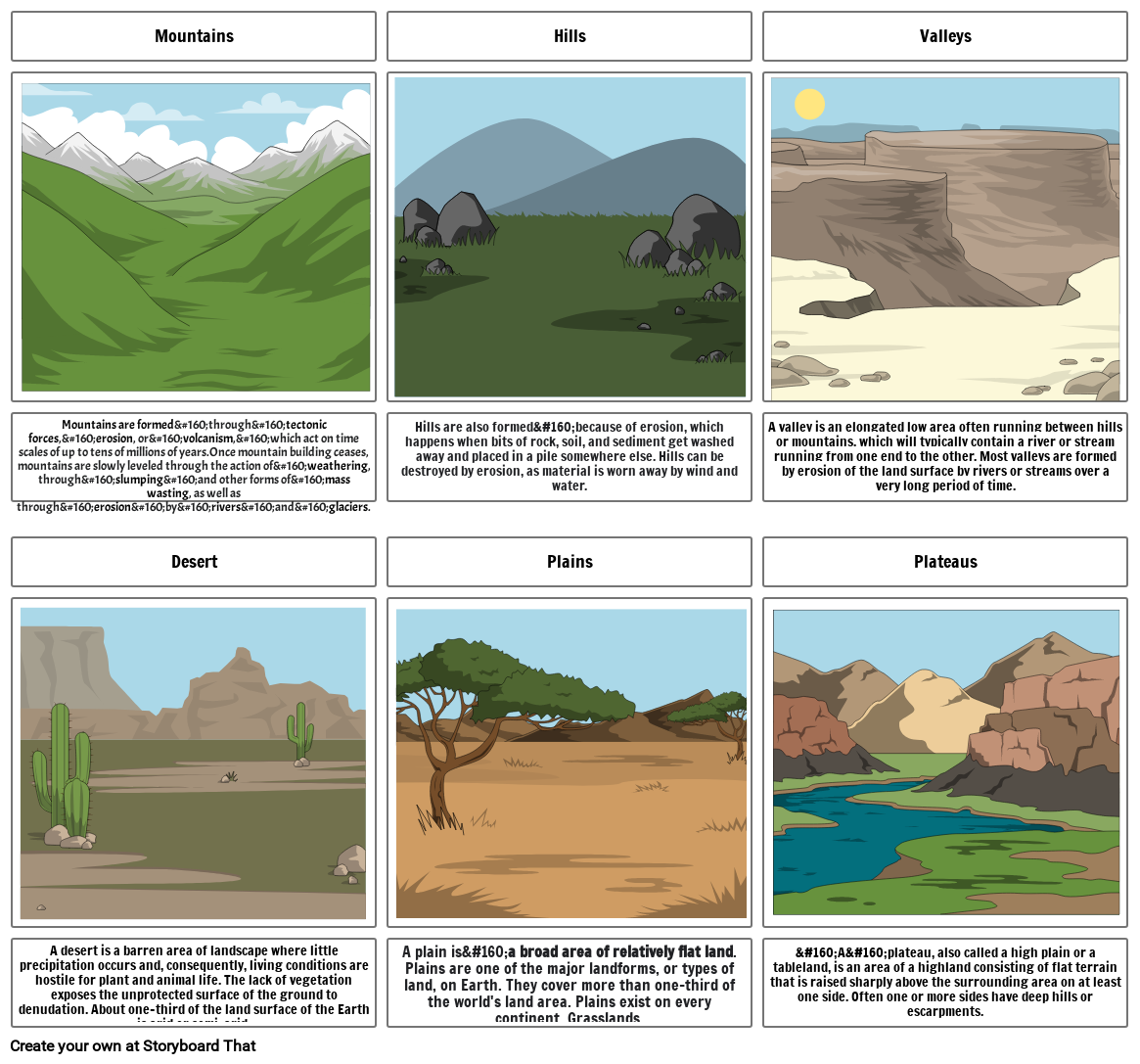Different Types Of LandForms

Storyboard Text
- Mountains
- Hills
- Valleys
- Mountains are formedthroughtectonic forces,erosion, orvolcanism,which act on time scales of up to tens of millions of years.Once mountain building ceases, mountains are slowly leveled through the action ofweathering, throughslumpingand other forms ofmass wasting, as well as througherosionbyriversandglaciers.
- Desert
- Hills are also formedbecause of erosion, which happens when bits of rock, soil, and sediment get washed away and placed in a pile somewhere else. Hills can be destroyed by erosion, as material is worn away by wind and water.
- Plains
- A valley is an elongated low area often running between hills or mountains, which will typically contain a river or stream running from one end to the other. Most valleys are formed by erosion of the land surface by rivers or streams over a very long period of time.
- Plateaus
- A desert is a barren area of landscape where little precipitation occurs and, consequently, living conditions are hostile for plant and animal life. The lack of vegetation exposes the unprotected surface of the ground to denudation. About one-third of the land surface of the Earth is arid or semi-arid.
- A plain isa broad area of relatively flat land. Plains are one of the major landforms, or types of land, on Earth. They cover more than one-third of the world's land area. Plains exist on every continent. Grasslands.
- Aplateau, also called a high plain or a tableland, is an area of a highland consisting of flat terrain that is raised sharply above the surrounding area on at least one side. Often one or more sides have deep hills or escarpments.
Over 30 Million Storyboards Created


